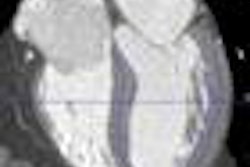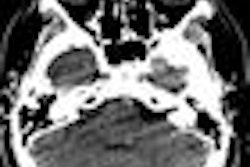Dear AuntMinnie Member,
A new study in the Journal of the National Cancer Institute revives the debate over how often older women should receive breast screening with mammography, finding that screening every two years was just as effective as annual screening, while producing fewer false positives.
The study focused on the appropriateness of screening older women who have underlying illnesses. These women could have shorter life expectancies that could reduce the effectiveness of mammography, and offering them annual mammography screening could have major health policy implications.
The researchers found no difference in the detection of early-stage disease as measured by tumor size between women who received annual screens versus those who were screened every two years. At the same time, the researchers claimed that rates of false-positive detections were higher in women screened annually, and implementing annual screening in women with comorbidities would result in even more complications in these women.
Read more by clicking here, or visit our Women's Imaging Digital Community at women.auntminnie.com.
CT cancer risk
In other news, a new study in Radiology provides some perspective on the real risk of radiation-induced cancer faced by patients who receive CT scans. The study's conclusion? The risk from CT is dwarfed by that of the underlying illness.
Researchers from Massachusetts General Hospital analyzed death rates of some 22,000 patients who underwent abdominal and thoracic CT scans at three university hospitals in the Boston area. They found that 3.9% of patients getting the abdominal scans were dead five years later, and 7.1% of the thoracic CT recipients had died. The most frequently scanned patients were much sicker and predictably died at even higher rates.
By contrast, the calculated death rates for the patient population using statistical modeling tools showed that over a 30-year period only 0.1% of the entire patient population would have died from cancer induced by CT radiation.
Learn more by clicking here, or visit our CT Digital Community at ct.auntminnie.com.
PiB-PET finds cardiac amyloid plaque
Finally, a new study in the Journal of Nuclear Medicine offers further evidence of the clinical utility of PET with carbon-11-labeled Pittsburgh Compound B (PiB), a relatively novel radiotracer.
PiB-PET has mostly carved out a role in detecting signs of beta amyloid in the brain, which is believed to be a precursor to Alzheimer's disease. But Swedish researchers used the radiotracer to also detect signs of amyloid deposits in the heart.
They believe the deposits could be signs of cardiac amyloidosis, in which amyloid deposits lead to structural changes in heart tissue -- a potentially fatal development.
Learn more by clicking here, or visit our Molecular Imaging Digital Community at molecular.auntminnie.com.




















